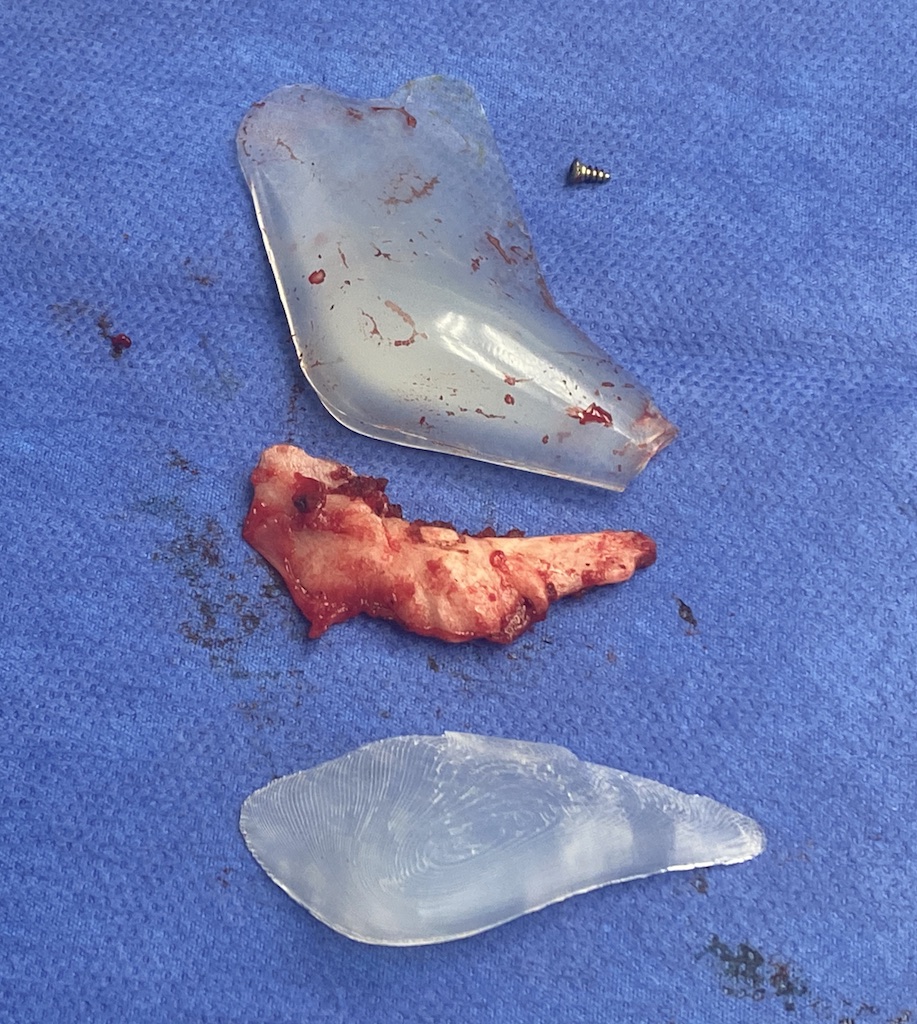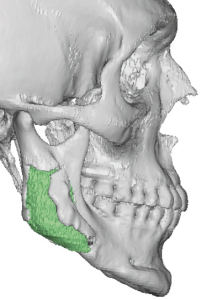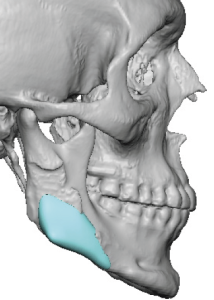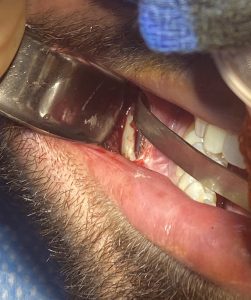Background: Jaw angle implants pose very difficult challenges than chin implants in both size and style selection as well as surgical placement. The most obvious difference is that a chin implant is a single procedure while jaw angle implants are two procedures due to their bilateral locations. Positioning a single implant over a solitary projecting chin bone has less risk of complications than trying to position two implants symmetrically over what are often asymmetric jaw angle shapes that covered by thick muscle tissue.
A less obvious difference is that the working end of a chin implant is in the direct line of vision from the incision regardless if it is intraoral or submental. Conversely the working end of the jaw angle implant can not be seen from the intraoral incision as it’s superior portion blocks visualization of the inferior and posterior working angle portion of the implant. Thus it is very diffcult to tell exactly where the jaw angle implant is on the bone. It is largely guided by a few surrounding bony landmarks and external palpation …a far cry of how a chin implant is placed.
As a result jaw angle implant asymmetry is really the norm and not the exception. Custom jaw angle implants fare better for the obvious reason that they are designed specifically for the patient’s jaw angle bony shape and there is intraoperative guidance for how the implant fits the bone from the design. That does not mean it is a guarantee for assured placements but the odds are better. But when custom jaw angle implants are used to replace undesired standard ones other variables in placement are encountered due to scarring and bony overgrowth.
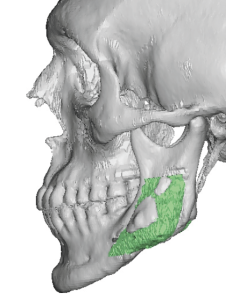
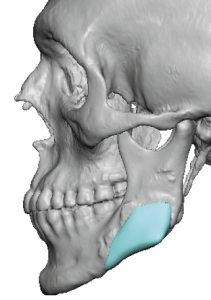

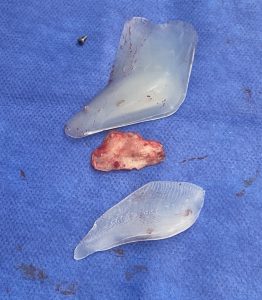
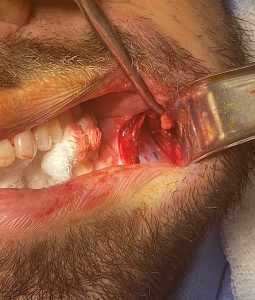
Jaw angle implants commonly develop bony overgrowths on their superior surface. This is due to the elevation of the periosteum over the muscle and is a form of reparative response to the implant. I have seen it many times both on 3D CT scans as well as in jaw angle implant revisions. If the surgeon is not aware that such bone overgrowths are present it would be easy to assume that there was no implant there. The bone overgrowth can be removed by osteotomes to expose the implant for removal.
But the hardest party of jaw angle implant replacements is their positioning on the bone. Where to place them exactly defies a precise method to do so given the limited visibility from the intraoral incision. In this case the left jaw angle implant was guided by the established pocket positioning. On the right side however the new implant position had to be guided more by knowing that it was anterior to the previous implant location.
Case Highlights:
1) Jaw angle implants are the most challenging of all facial implants to successfully place and get the desired effect.
2) If primary placement of jaw angle implants is difficult revisions of them are even more so due to scar tissue and bone overgrowth that occurs around them..
3) There are few registration landmarks in the jaw angle area to help guide placement, particularly when placed in a non-traditional location.
Dr. Barry Eppley
World-Renowned Plastic Surgeon

